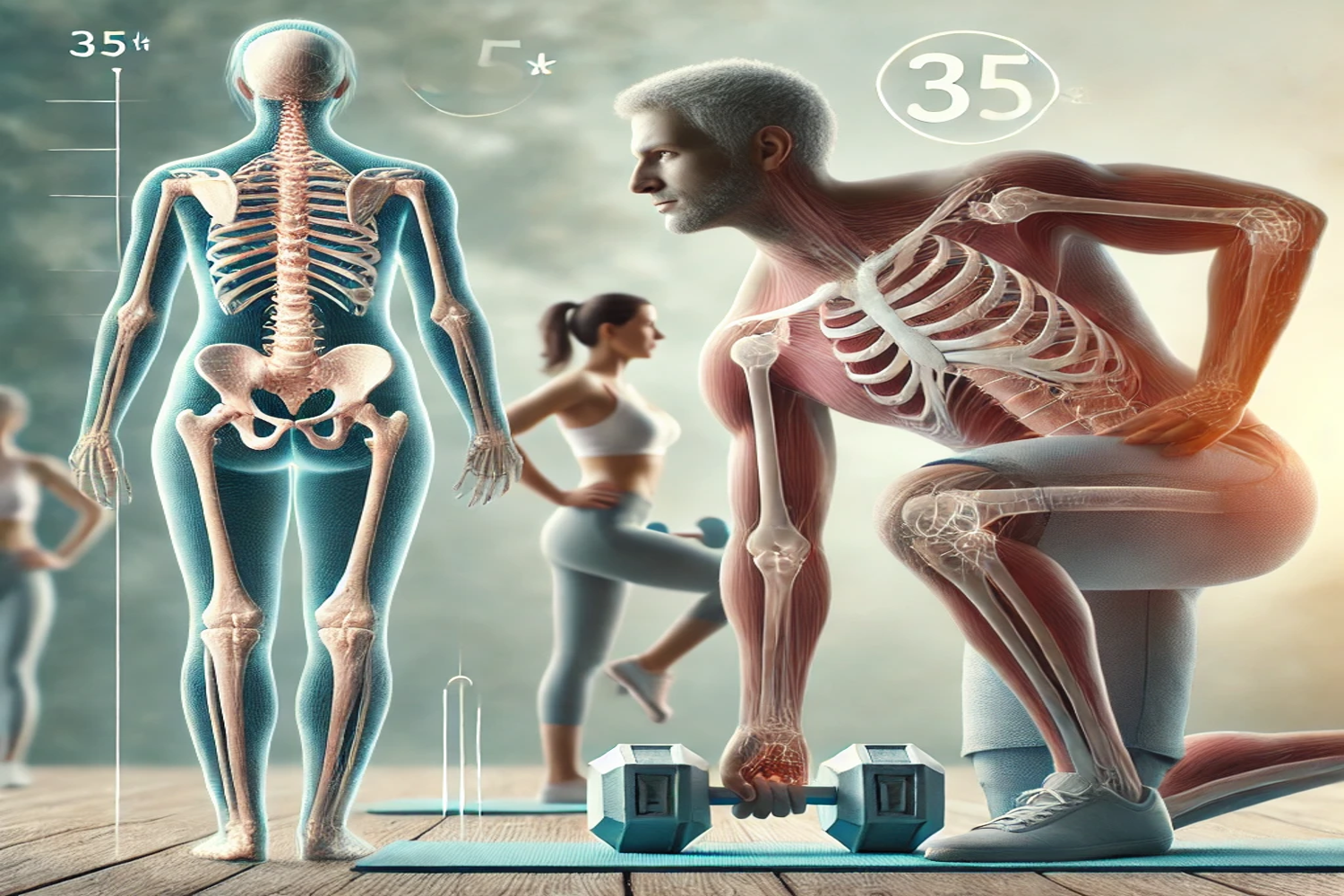The Importance of Bone Mineral Density for Men and Women Aged 35 and Above
As we age, taking care of our health becomes increasingly important. One critical aspect often overlooked is bone mineral density (BMD). From the age of 35, both men and women start to experience a gradual decline in bone density, which can lead to serious health risks later in life. Understanding and actively working to maintain bone health can have long-lasting benefits for mobility, independence, and overall quality of life.
What is Bone Mineral Density?
Bone mineral density refers to the amount of bone mineral (such as calcium) in your bones. It is a key indicator of bone strength and resilience. Healthy BMD ensures that your bones can support your body weight, protect your organs, and withstand stress or impact. A lower BMD can make your bones more fragile, increasing the risk of fractures, especially as you age.
The most well-known condition linked to low BMD is osteoporosis—a condition where bones become so brittle that even a minor fall or bump can cause a fracture. While it is more common in women, men are not immune to the effects of decreasing bone density.
Why is Bone Mineral Density Important After 35?
From around the age of 30, bone mass peaks, and by the mid-30s, the balance between bone formation and bone loss starts to shift. Without intervention, bone density begins to decrease, and by the time you reach your 50s or 60s, the risk of developing osteoporosis or fractures significantly increases.
For women, this process is often accelerated after menopause due to the reduction in estrogen, a hormone that plays a crucial role in maintaining bone mass. Men also experience a decline in testosterone with age, which impacts bone health.
The Impact of Low Bone Mineral Density:
- Increased Risk of Fractures: Low bone density increases your chances of breaking bones, particularly in the hips, spine, and wrists. Hip fractures can be particularly debilitating and often require surgery or long recovery periods.
- Reduced Mobility: Fractures or bone pain due to low BMD can make it harder to stay active. Decreased mobility leads to a loss of independence and a lower quality of life as you age.
- Chronic Pain: Bone-related conditions like osteoporosis can lead to ongoing pain and discomfort, especially in the back and joints.
- Reduced Lifespan: Studies show that fractures in older adults can lead to serious complications and even reduce life expectancy. Hip fractures, in particular, are associated with increased mortality within a year of injury.
How to Maintain and Improve Bone Mineral Density
While bone loss is a natural part of aging, there are several steps you can take to protect and even improve your bone health.
1. Prioritise Calcium and Vitamin D Intake
Calcium is the most important mineral for bone health, and Vitamin D helps the body absorb calcium effectively. Adults over 35 should ensure they are getting enough calcium-rich foods like dairy products, leafy greens, and fortified cereals. Vitamin D can be absorbed through sunlight, but supplements may also be necessary, especially during winter months.
2. Incorporate Weight-Bearing Exercise
Regular exercise, especially weight-bearing and resistance training, is one of the best ways to build and maintain bone density. Exercises like walking, running, hiking, and strength training force your bones to bear weight, stimulating bone growth. Even low-impact activities like yoga can help improve balance and prevent falls, which reduces the risk of fractures.
3. Avoid Smoking and Excessive Alcohol Consumption
Smoking and heavy alcohol use can significantly weaken bones. Nicotine reduces blood supply to the bones, while alcohol interferes with calcium absorption, both of which contribute to bone loss.
4. Get Regular Bone Density Tests
Once you hit 50 or earlier if you have risk factors (family history of osteoporosis, early menopause, low body weight), it’s essential to get your bone density checked. A simple scan called a DEXA (dual-energy X-ray absorptiometry) scan can measure your bone density and help identify any issues before they become severe.
5. Consider Medication if Necessary
For individuals at high risk of fractures or diagnosed with osteoporosis, medications such as bisphosphonates or hormone replacement therapy (HRT) can help slow bone loss and, in some cases, increase bone density. Always consult a healthcare provider for appropriate recommendations.
The Long-Term Benefits of Maintaining Strong Bones
By taking care of your bones from age 35 onwards, you’re not just protecting yourself from fractures—you’re also investing in a future where you can remain active, independent, and pain-free. Bone health plays a key role in overall longevity and quality of life, making it a vital aspect of your health strategy as you age.
Maintaining strong bones also has a ripple effect on other aspects of your health. For instance, staying physically active by building bone density improves cardiovascular fitness, mental health, and muscle strength—all of which contribute to a healthier, longer life.
Final Thoughts
While bone mineral density might not be at the forefront of your mind, especially if you’re feeling healthy now, taking proactive steps to maintain it can have a profound impact on your future. Whether through diet, exercise, or lifestyle changes, ensuring that your bones stay strong can help you enjoy a long, active, and healthy life well into your later years.
Now is the time to prioritise your bone health—because healthy bones mean a healthier future.


